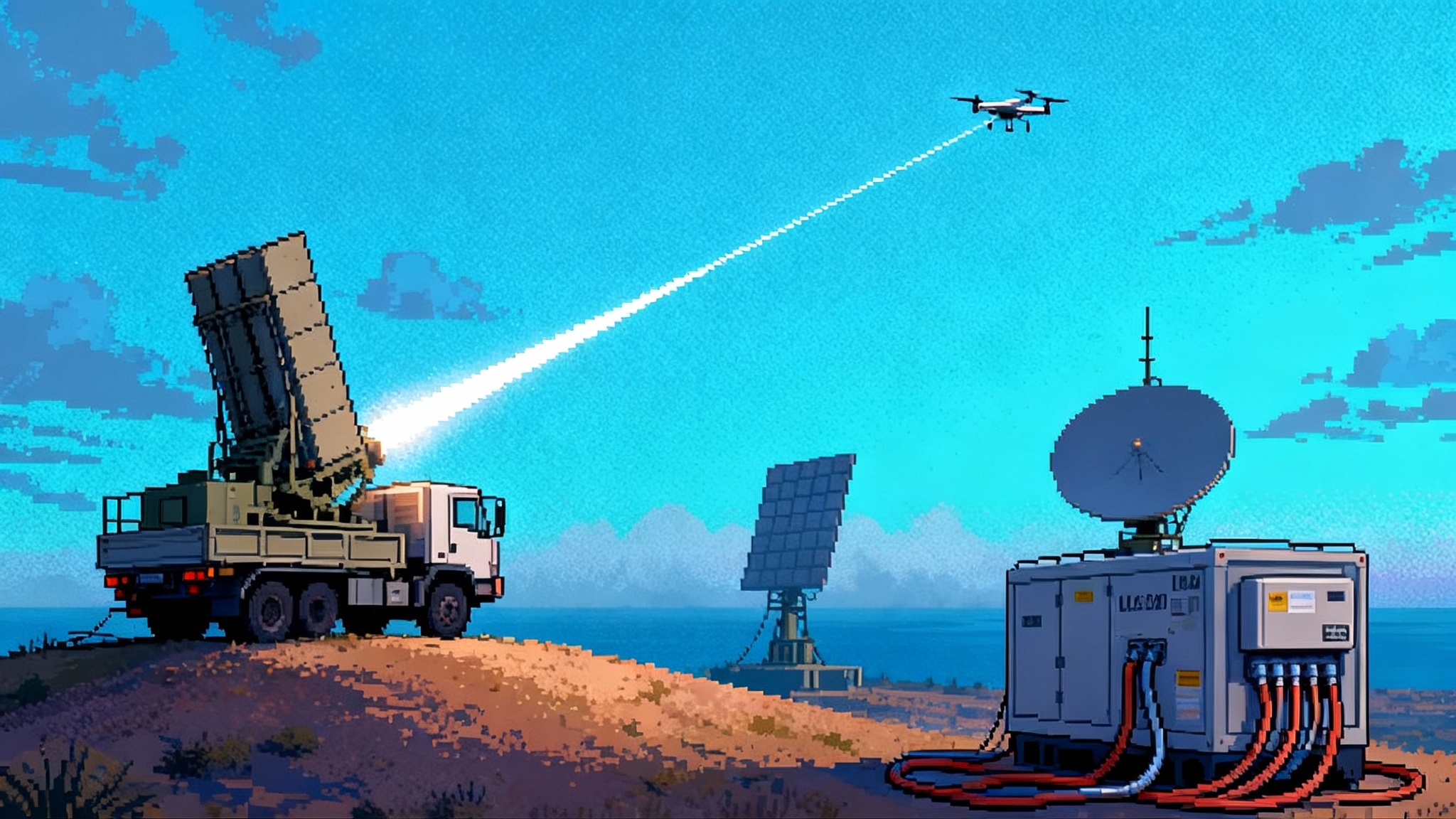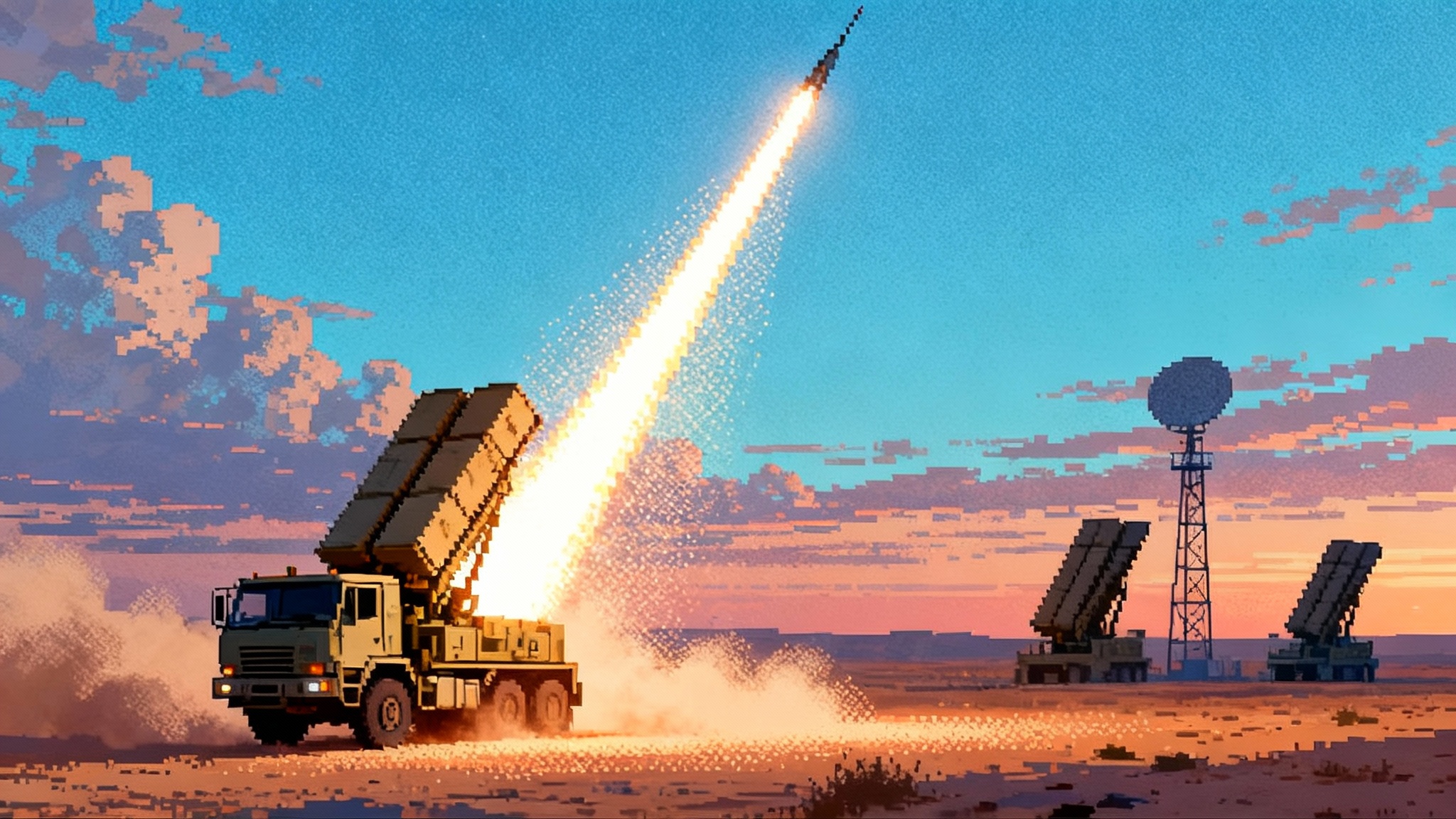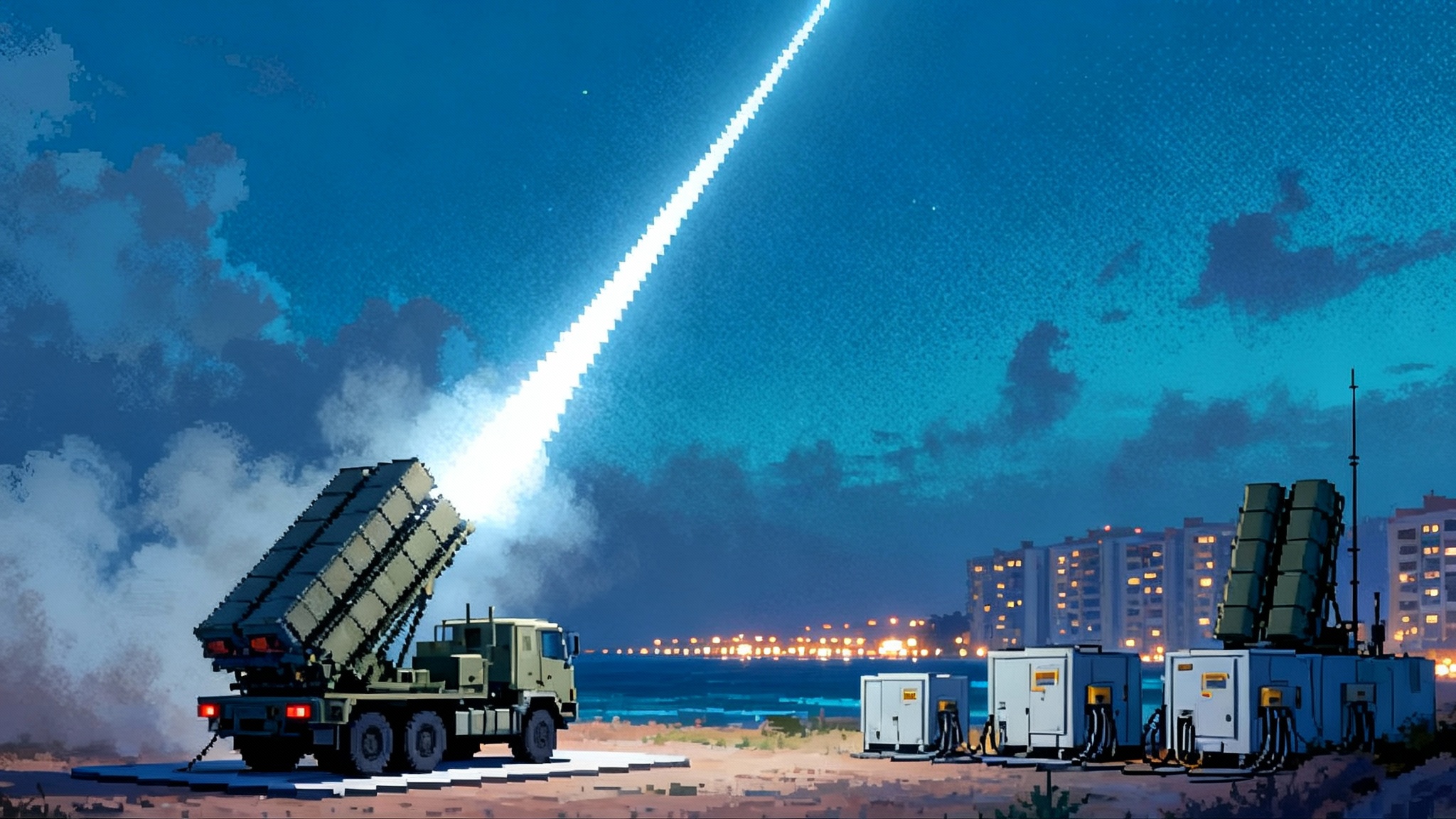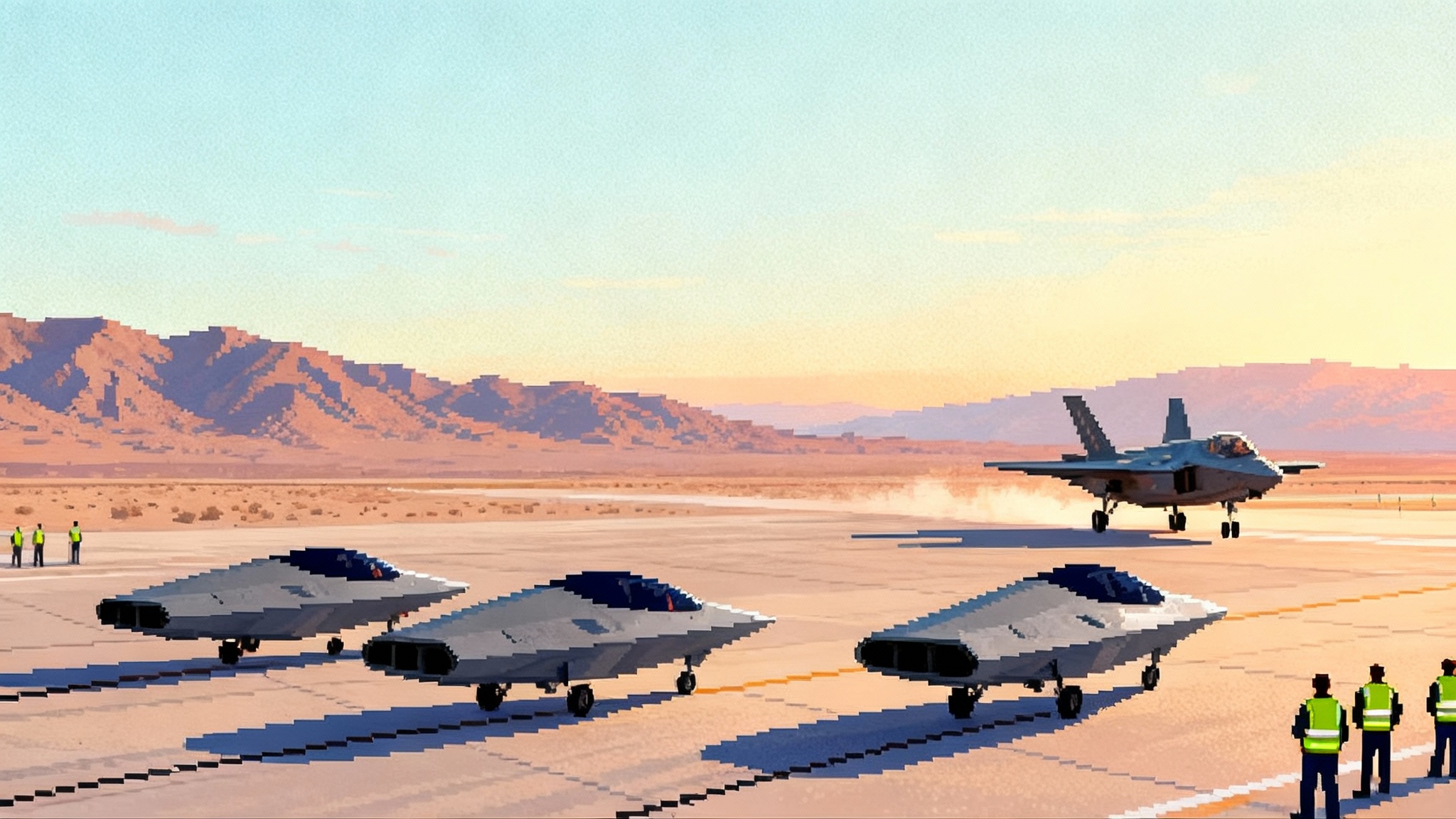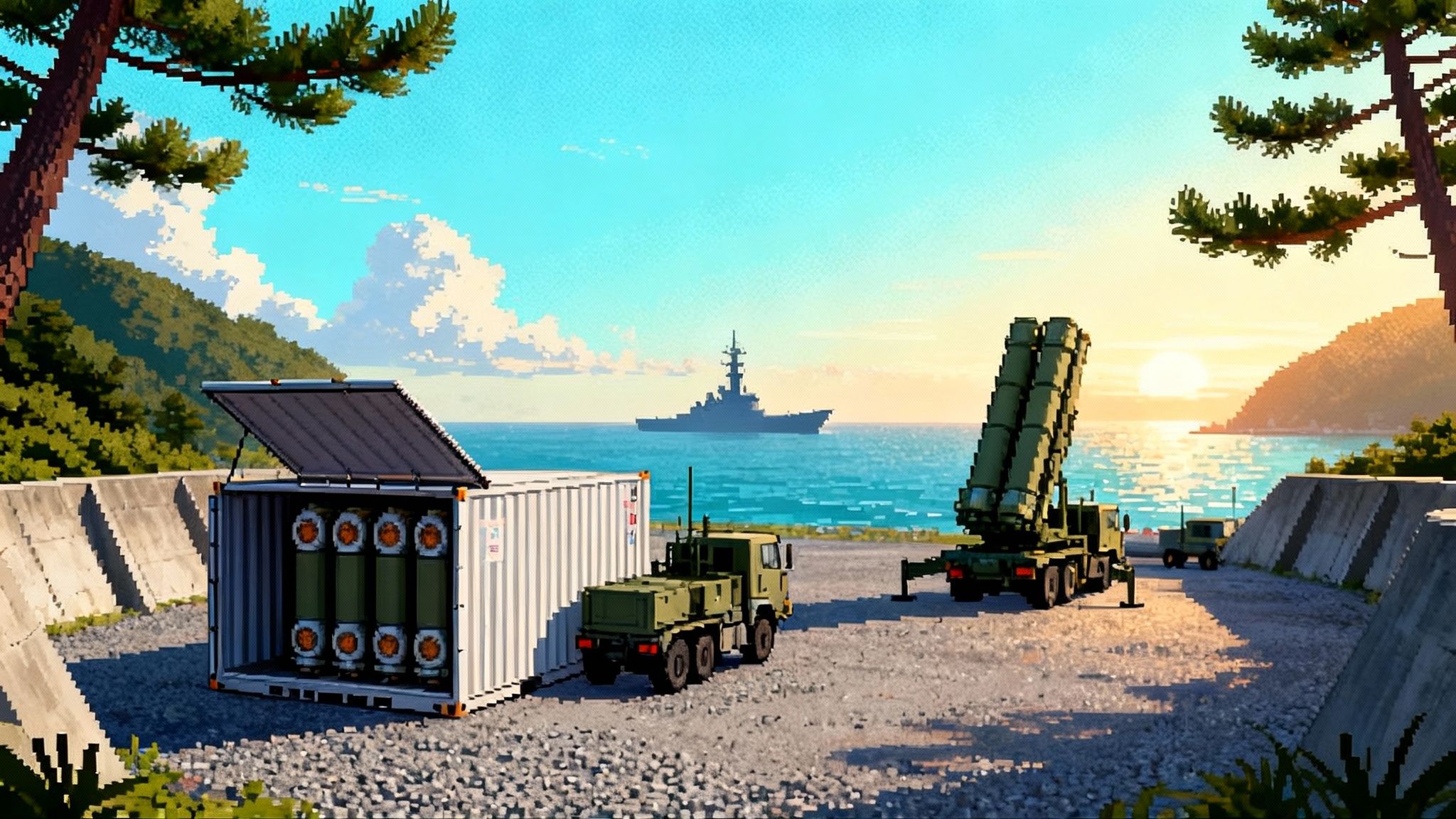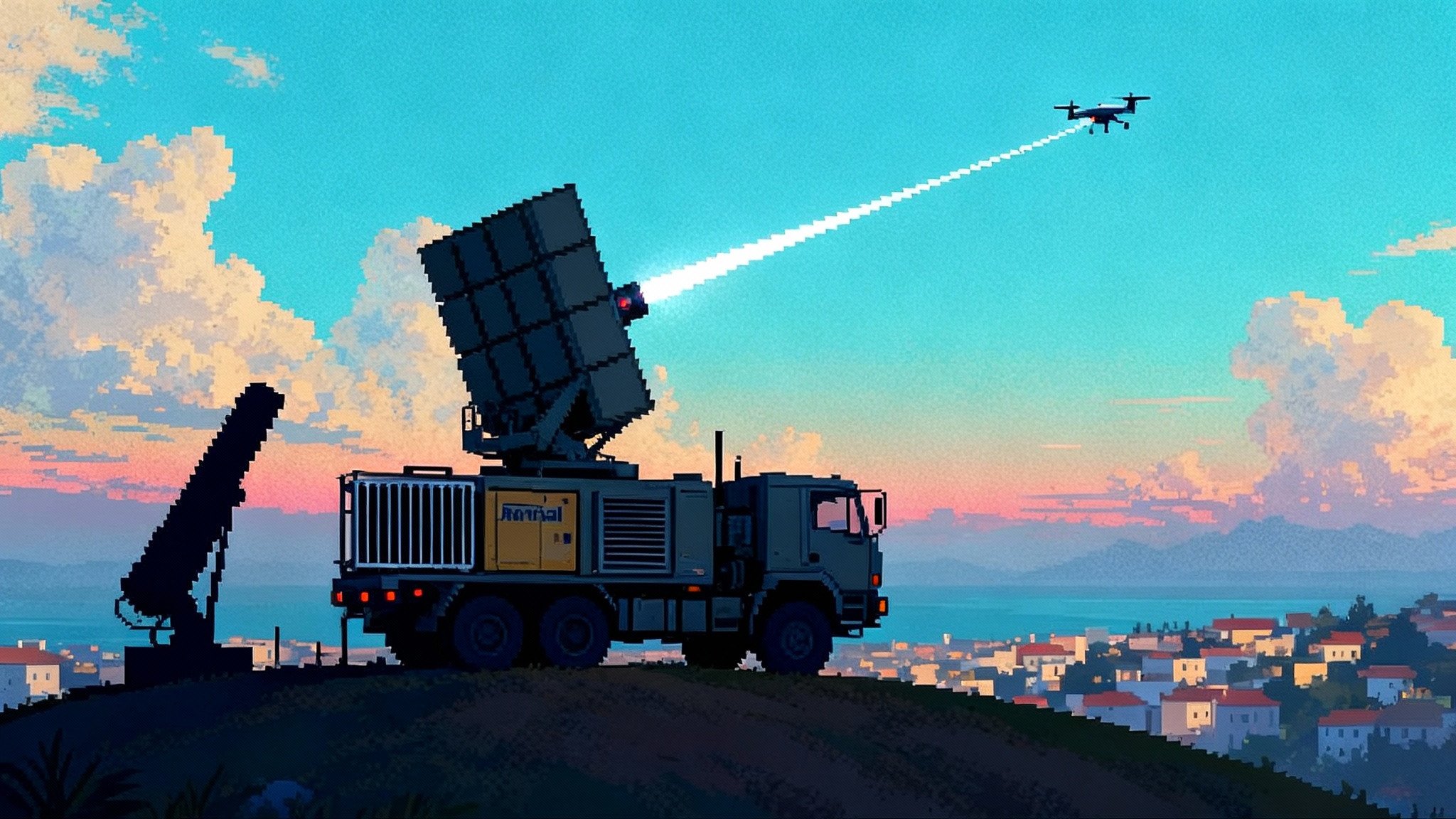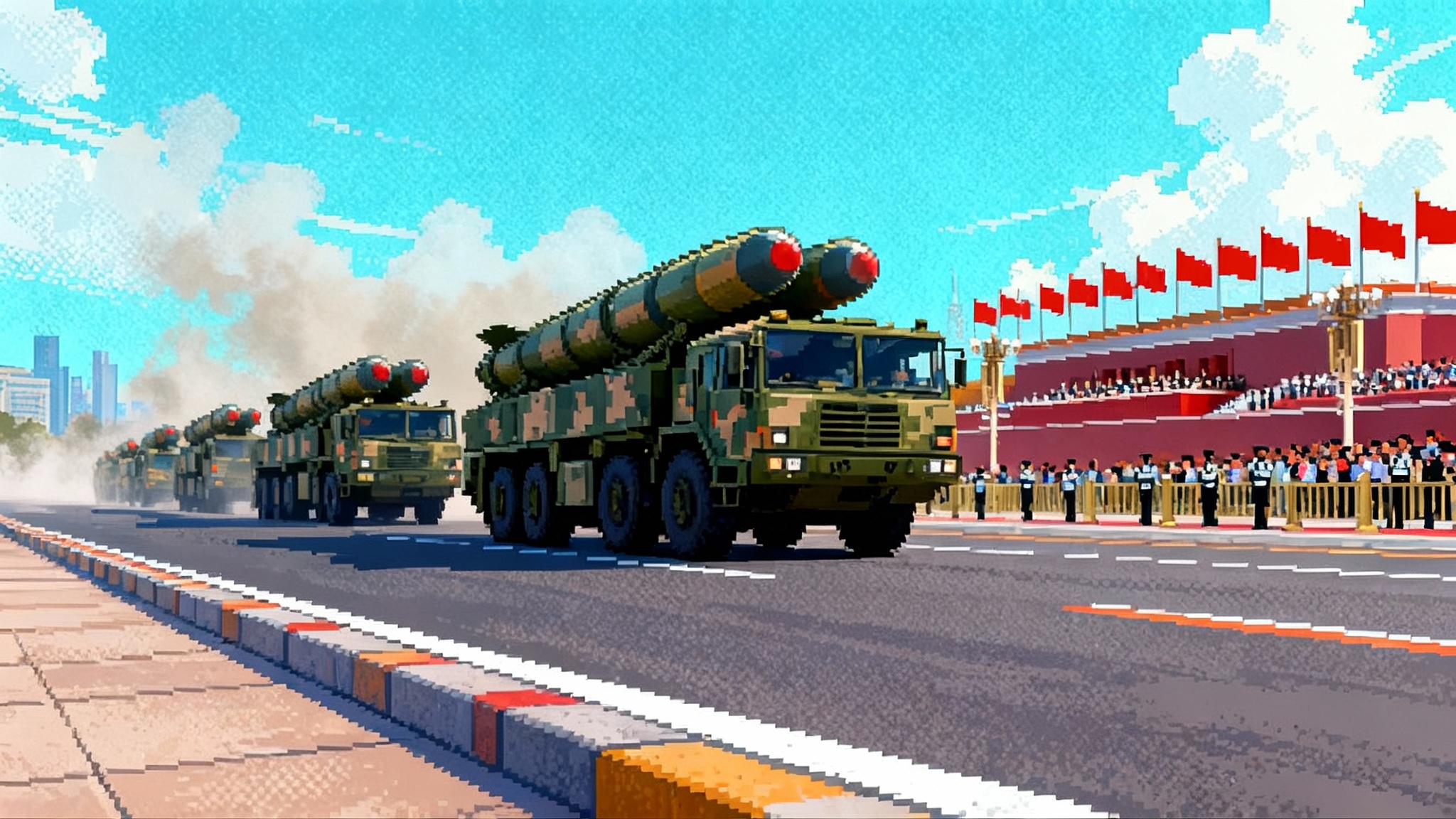SDA’s Tranche 1 Goes Live, the Pentagon’s LEO Mesh
On September 10, 2025, the Space Development Agency launched 21 Tranche 1 Transport satellites, kicking off a launch‑per‑month sprint. Here is what this proliferated LEO mesh means for hypersonic tracking, sensor‑to‑shooter links, and air defense in 2026.

The day the mesh went operational
On September 10, 2025, the Pentagon’s proliferated low Earth orbit experiment became an operational reality. A Falcon 9 rose out of the coastal fog at Vandenberg with 21 small satellites packed inside, the first tranche of a resilient, optical‑linked network meant to move targeting data around the world in seconds. These are the initial spacecraft of SDA’s Tranche 1 Transport Layer, and their job is simple to say and hard to do: get critical data from any sensor to any shooter, even when an adversary is trying to break the network. As the countdown clock hit zero, the United States began fielding a different kind of space architecture designed for wartime attrition rather than peacetime perfection.
The facts are straightforward. The first operational launch placed 21 Tranche 1 satellites into orbit on September 10 from Vandenberg, and the Space Force says launches will continue about once per month as the constellation builds out. Those are not demo birds. They are the front edge of a working network, and they set the tempo for a 10‑month campaign that will define how fast the United States can stand up a combat‑credible space layer in LEO. You can read more in Space Systems Command’s release on SDA's first 21 satellites.
Why proliferated LEO changes the playbook
For decades, U.S. missile warning depended on a small number of exquisite satellites. They were powerful and expensive, and they were big targets. The new approach spreads capability across many smaller nodes in low orbits, connected by optical crosslinks. The advantages cascade:
- Resilience through numbers. Knock out a few satellites and the network reroutes around the damage. With monthly launches, the U.S. can replenish capability faster than an adversary can attrit it.
- Lower latency. Shorter distances to Earth, plus laser crosslinks between satellites, cut the time for sensor data to reach shooters.
- Rapid spirals. SDA’s model pushes upgrades in two‑year tranches rather than once in a generation refresh cycles. The constellation improves while it is in service, not only at end of life.
This matters most where decision timelines are measured in tens of seconds, not minutes. Hypersonic threats compress the window for warning, tracking, and engagement. A proliferated LEO mesh puts more eyes on the problem and more pathways to deliver the solution.
What launched, and what it can do now
This first mission delivered Transport Layer satellites. They form the backbone for tactical data movement. Think of them as spaceborne routers with secure radios and laser terminals. Two early capabilities stand out:
- Tactical datalinks from space. Link 16 and related tactical waveforms can hop to orbit, then back down to aircraft, ships, and ground units that are beyond line of sight. That means a fighter over the Philippine Sea can see a track pulled by a ship’s radar hundreds of miles away, or vice versa, without touching vulnerable terrestrial relays.
- Optical intersatellite links. Lasers tie the network together. When the adversary jams or disrupts ground nodes, the mesh keeps moving data laterally on orbit and only drops to Earth at hardened entry points.
The immediate impact is limited but real. After on‑orbit checkout, which leaders have said could take on the order of a few months, the first users begin training with live traffic rather than lab simulations. Early adopters are expected to include Indo‑Pacific operators who need resilient connectivity across vast distances with contested spectrum and limited infrastructure. The payoff is faster kill chains and more options when traditional comms are noisy or cut.
The Tracking Layer joins in 2026
Transport alone does not track a hypersonic glide vehicle. That job belongs to the Tracking Layer, a set of infrared sensor satellites that will feed the mesh with detections, tracks, and updates. SDA plans four Tracking missions in Tranche 1, and officials have said those launches start in early 2026 as part of the 10‑month cadence, with transport flights continuing in between. Defense News outlined the schedule for tracking launches start early 2026.
Once the first Tracking Layer planes are up, the warfighter gets something new: space sensors designed to maintain custody on dim, fast, maneuvering threats through the hardest part of flight. The mesh carries those tracks with minimal delay to battle managers and shooters. You do not need the entire constellation to start seeing effects. Even a partial plane adds time on target opportunities and reduces the number of blind spots where a target can slip out of view.
How the kill chain changes
Think about the sensor to shooter loop as a relay race. Today, too many handoffs happen on fragile, fixed routes. With the mesh, the baton can move along multiple lanes that are hard to disrupt.
- Detect and hold. Tracking satellites in LEO collect infrared signatures and kinematic data. Their vantage point and revisit rate help maintain custody as a hypersonic weapon maneuvers.
- Fuse and validate. Onboard processing and ground nodes fuse tracks from multiple satellites. Transport Layer links feed the fused picture into theater command and control without waiting for a single gateway.
- Push to shooters. The same network pushes timely track messages to Aegis afloat, IBCS‑enabled air defense units ashore, fighters on patrol, and other shooters. Because the path is spaceborne for most of its journey, it is less exposed to jamming and cuts.
- Update in flight. As the target maneuvers, the mesh keeps the track current and refreshes aimpoints. Shooters receive midcourse updates over resilient links, improving intercept quality and expanding engagement windows.
The result is not just speed. It is adaptability. If an adversary jams a ground network, the path shifts. If a gateway goes dark, the mesh routes around it. If one shooter cannot take the shot, another one gets the data in time to act.
What arrives when: a field guide from now to late 2026
- Fall 2025. The first 21 Transport satellites are on orbit. After health checks, units begin structured training events that push real traffic over the mesh. Expect initial uses to focus on transport, Link 16 from space, and moving fused tracks created by existing terrestrial and airborne sensors.
- Late 2025. Additional Transport launches add coverage and capacity. The network begins to feel less like a string of beads and more like a web. Theater users start practicing cross‑domain fires with live connectivity, including air to maritime and maritime to air.
- Early 2026. The first Tracking Layer launches lift. Custody on stressing targets improves as the initial planes come online. Combined Transport plus Tracking operations begin in select regions with periods of persistent coverage.
- Mid 2026. With several Tracking and Transport missions complete, the Indo‑Pacific and European theaters see longer windows of continuous custody for fast threats. Sensor to shooter timelines shrink and become more predictable. Operators refine tactics for passing midcourse updates over space links directly to shooters.
- Late 2026. The Tranche 1 campaign nears completion. Regional capacity matures. Exercises shift from proving the pipes to rehearsing real war plans that assume space transport and tracking are available in contact.
This timeline is aggressive, but it is the point. SDA’s spiral approach is built to deliver usable increments quickly, then layer on more. You do not wait for the last satellite to be in place to start fighting differently.
How services will use it in 2026
- Navy and Marine Corps. Aegis destroyers and Marine air defense units gain spaceborne paths for track updates and engagement orders that do not depend on a single aircraft or shore gateway. Cooperative Engagement Capability and NIFC‑CA benefit from additional, jam resistant paths to share track quality across the force. For context on maritime threat evolution, see China's new sea skimmers.
- Air Force. Fighters and bombers get a steadier diet of fused tracks and targeting messages beyond line of sight, with fewer hops. E-7 Wedgetail and other battle managers can act as smart gateways, but they no longer have to be in every loop.
- Army. IBCS networks gain a complementary transport path that is hard to shut down. Air and missile defense batteries can receive updates and tasking even under spectrum attack, and pass shooter status back into the common fire control picture. Land-based long-range fires also benefit from faster tasking and updates.
- Joint and SOF. Small teams and distributed maritime groups can plug in with compact terminals to get the same picture as the big platforms, then cue fires or pass targeting data without exposing their location through long terrestrial relays. Expect tighter pairing with attritable drones under Replicator as unmanned systems ride the same spaceborne links.
The net effect is a joint force that is harder to isolate and faster to act. The mesh also enables more dynamic command and control. Commanders can decouple sensing and shooting, assign the best available sensor and the best available shooter, and rely on the network to make the handoff.
What this means for air and missile defense
Proliferated LEO does not magically solve the physics of intercepting a maneuvering hypersonic weapon. It does change the geometry of the fight.
- More frequent custody refresh. LEO tracking with multiple planes reduces the gaps where a target can hide. Continuous custody means more accurate projected intercept points and fewer wasted shots.
- Wider shooter eligibility. With fresh, high quality tracks moving quickly, shooters that were out of the loop become viable. That allows salvo tactics that stress the threat and reduce single point failure.
- Better cost per shot. Reliable midcourse updates and cleaner handoffs let forces fire later, with better aimpoints, and fewer follow ups. That lowers inventory risk in a protracted fight.
The other big effect is deterrence. A resilient space mesh signals to adversaries that blinding a handful of satellites or cutting a few cables will not collapse the kill chain. For how directed energy is changing the defensive balance, see laser air defense tipping point.
Practical realities and friction points
There is still work to do. A few frictions are worth calling out now so units can plan around them in 2026.
- Terminal fielding and crypto. Space links only help if shooters have the right terminals and keys. Services will need disciplined rollout plans, smart key management, and the training reps that make crypto changes routine, not disruptive.
- Interop and standards. The mesh enables many paths. That cuts two ways. Without consistent message standards and clean interfaces into systems like Aegis and IBCS, the force can drown in options. The answer is ruthless simplification of the last tactical mile.
- Deception and cyber. A resilient physical path does not eliminate the threat of false tracks or corrupted data. Red teams should be inside these exercises now, forcing crews to validate, cross check, and manage confidence levels in real time.
- Constellation management under fire. The same agility that routes around damage can cause chaos if operators are not trained to understand the mesh. Expect new tools and TTPs that make complex routing decisions visible and controllable at the right echelons.
What to watch between now and the first tracking launch
- Cadence discipline. Launch per month is the muscle movement the U.S. has to build. Slips will happen, but the average matters. The goal is to normalize replenishment and upgrades on operational timelines.
- User adoption. The most valuable metric in the next six months is not satellite count, it is how many units are training with the mesh for real missions. Watch for Indo‑Pacific exercises and live intercept drills that treat space transport as routine.
- Early custody demos. As the first Tracking satellites come online, look for publicized exercises that maintain custody through maneuvers and handoffs. Those will prove the concept and build trust at the tip of the spear.
The bottom line
September 10 was not just a launch. It was the start of a new default for how the United States will move targeting data in a fight. The first 21 Transport satellites are on orbit, more are coming each month, and the Tracking Layer begins flying in early 2026. By the time the campaign is done, the joint force will have a space backbone that is fast, flexible, and built to take a punch. The shift from a few exquisite satellites to a proliferated, resilient mesh is not theory anymore. It is live, and the way the services train in the next year will determine how much it changes the fight when it counts.
